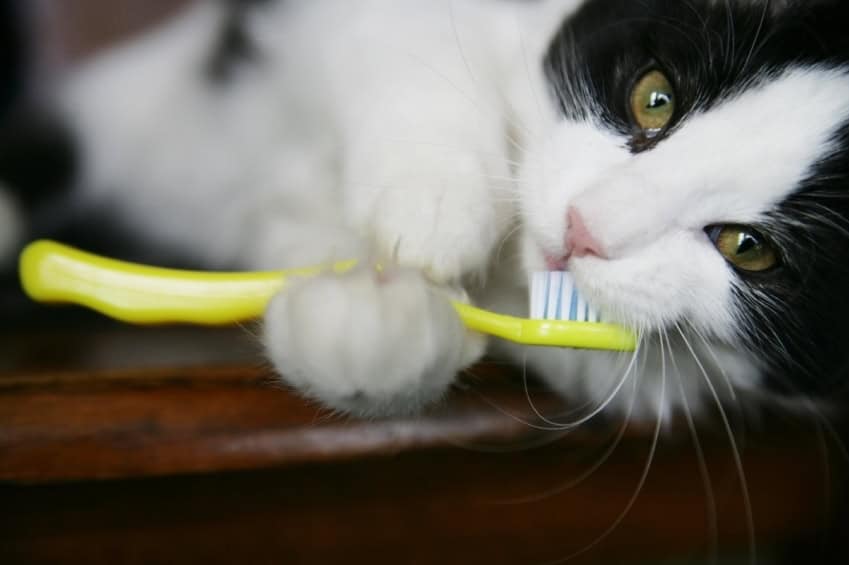The Importance of Dental Care for Pets
 According to the American Veterinary Dental Society, over 70 percent of cats and 80 percent of dogs will have gum disease by the time they are three years of age. Unfortunately, many pet owners don’t understand how important dental care is for our pets.
According to the American Veterinary Dental Society, over 70 percent of cats and 80 percent of dogs will have gum disease by the time they are three years of age. Unfortunately, many pet owners don’t understand how important dental care is for our pets.
Just like people, pets develop plaque on their teeth, both on the tooth and below the gum line. Over time, this buildup can lead to tooth decay and dental disease. In extreme cases, it can develop into periodontal disease, which can lead to infections that may affect the heart, lungs, liver, and kidneys.
How to Recognize Dental Problems
When you have taken your pet in for his or her yearly check-up, you have probably noticed that your veterinarian looked into your pet’s mouth as part of the exam. Your veterinarian is looking for signs of dental disease, including:
- Bad breath
- Discolored teeth
- Loose teeth
- Swelling of the gums, mouth or jaw
- Loose teeth
- Excessive drooling, especially in cats
- Tender or red areas of the mouth
If you notice any of these problems, or if your pet stops chewing, playing, or eating, be sure to let your veterinarian know, as these are often the first signs of dental disease in pets.
Dental Care for Pets
It is recommended that pets receive routine oral examinations and cleaning at least once a year. Thorough exams and cleanings are routine, and done under general anesthesia. This ensures your pet is comfortable and safe during the procedure.
While your pet is asleep, your veterinarian will clean all of the teeth, clean below the gum line and check for any problem areas or signs of disease. After any needed work is complete and the anesthesia has worn off, your pet will be able to return home with you. If there was a lot of plaque buildup, or signs of infection, you may be sent home with antibiotics and after-care instructions, as well.
Rocklin Ranch’s New State-of-the-Art Dental Facility
We understand that anytime a pet has to undergo anesthesia, there is some anxiety for his or her family. Our team provides the highest quality of care  possible and is AAHA certified.
possible and is AAHA certified.
Our new dental suites have three stations, and offer the most up-to-date dental cleaning techniques and tools. We can diagnose even the most difficult dental problems with our digital dental x-ray, and provide periodontal therapy and dental bonding, as needed. Your pet is constantly monitored, and stays comfortable through the whole procedure.
Just like humans need routine cleaning and professional dental care, so do our furry family members. Don’t underestimate the importance of dental care for pets. If your pet not had his or her teeth cleaned recently, give us a call to schedule your yearly dental check-up and wellness exam. Click here to learn more about our dental services.

